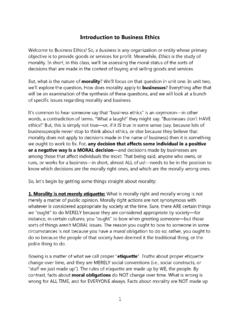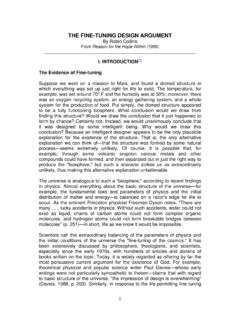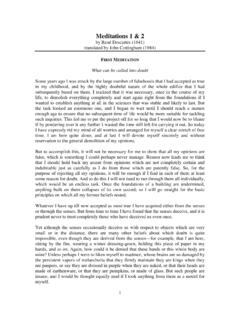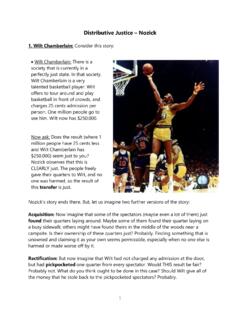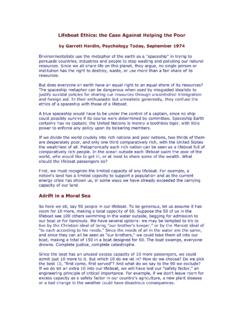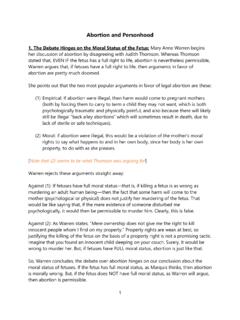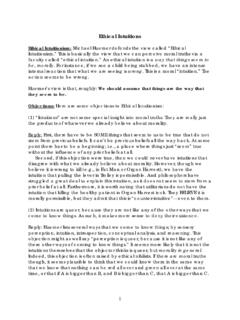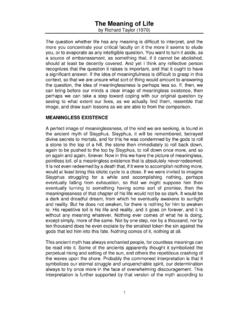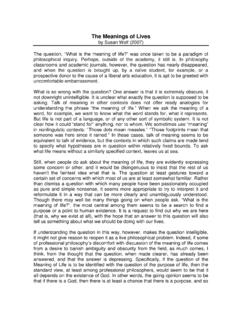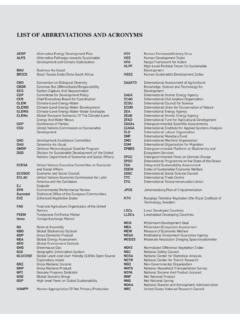Transcription of 5.1 Categorical Syllogisms
1 1 Categorical Syllogisms We have learned a great deal about Categorical propositions. In this lesson, we will learn how to construct valid arguments out of Categorical propositions. 1. Standard Argument Form: First, recall that an argument is a set of premises which support some conclusion. In this section, we will be specifically concerned with the kind of argument called a syllogism . syllogism : An argument consisting of three statements: TWO premises and ONE conclusion. Furthermore, we ll specifically be concerned with what is known as a Categorical syllogism . Categorical syllogism : A syllogism consisting of three Categorical propositions, and containing THREE DISTINCT TERMS, each of which appears in exactly two of the three propositions. So, what are these 3 terms mentioned? Consider the following syllogism : 1. All mammals are creatures that have hair. 2. All dogs are mammals. 3. Therefore, all dogs are creatures that have hair. See the three colors (red, blue, and green)?
2 There are THREE different terms in this argument (besides the quantifiers and the copulas). The three different terms are called the major term , the minor term , and the middle term. Notice that the conclusion only contains TWO of the three terms (red and blue), but one of the terms (green) is found only in the premises. Here are some definitions: Major Term: The predicate term of the conclusion (above, the blue term, creatures that have hair ) Minor Term: The subject term of the conclusion (above, the red term, dogs ) Middle Term: The term that does NOT appear in the conclusion (above, the green term, mammals ) Standard premise order: Finally, note that premise 1 contains the major term, while premise 2 contains the minor term. Premise 1 is therefore called the major premise, while premise 2 is called the minor premise. The standard form demands that the major premise ( , the one containing the major term) ALWAYS be listed first. 2 2. Mood and Figure: Now that we know the correct FORM of Categorical Syllogisms , we can learn some tools that will help us to determine when such Syllogisms are valid or invalid.
3 All Categorical Syllogisms have what is called a mood and a figure. Mood: The mood of a Categorical syllogism is a series of three letters corresponding to the type of proposition the major premise, the minor premise, and the conclusion are (A, E, I, or O). When determining the mood of a Categorical syllogism , you need to figure out which of the four forms of Categorical proposition each line of the argument is (A, E, I, or O). For instance, in the argument above about dogs, ALL THREE statements are A propositions (of the form All S are P ), so the mood of that argument would be AAA . Here is a syllogism that has a little more diversity: 1. No states with coastlines are states that are landlocked . 2. Some states are states that are landlocked . 3. Therefore, some states are not states with coastlines. Let s figure out the FORM of the premises and the conclusion: 1. No S are P (E) 2. Some S are P (I) 3. Some S are not P (O) So, the mood of this proposition is EIO.
4 Just to review, note also that the major term is states with coastlines, the minor term is states, and the middle term is states that are landlocked . Now, let s learn about figure. Figure: The figure of a Categorical syllogism is a number which corresponds to the placement of the two middle terms. For instance, consider the argument from earlier: 1. All mammals are creatures that have hair. 2. All dogs are mammals. 3. Therefore, all dogs are creatures that have hair. Notice that the middle term in the major premise is on the LEFT, while the middle term in the minor premise is on the RIGHT. Whenever this happens, we say that the argument has figure 1. Altogether, there are four possible figures: 3 Figure 1: The middle term is on the left in P1, and on the right in P2. Figure 2: The middle term is on the right in both premises. Figure 3: The middle term is on the left in both premises. Figure 4: The middle term is on the right in P1, and on the left in P2.
5 Let s look at the other argument from earlier: 1. No states with coastlines are states that are landlocked . 2. Some states are states that are landlocked . 3. Therefore, some states are not states with coastlines. Note that the middle term appears on the right in BOTH premises. So, this argument has figure 2. We can remember the four figures more easily with the following diagrams. If we call the subject of the conclusion S (the minor term), and the predicate of the conclusion P (the major term), and the middle term M , then the four figures look like this: We can draw lines through the middle terms in each of these four diagrams to create a collar-like shape, like this: In order to memorize the four kinds of figures, picture this collar flap image. From left to right, we see the layout of figures 1, 2, 3, and 4. 4 3. Valid Argument Forms: Now that we know about the proper FORMS of Categorical Syllogisms , and also how to assess what MOOD and FIGURE each argument has, we can use some charts to assess when an argument is valid or invalid.
6 Unconditionally Valid Forms: There are 15 combinations of mood and figure that are valid from the Boolean standpoint (we call these unconditionally valid argument forms). This chart depicts ALL of 15 the unconditionally valid argument forms Recall this argument from earlier: 1. All mammals are creatures that have hair. 2. All dogs are mammals. 3. Therefore, all dogs are creatures that have hair. Its mood was AAA since all three propositions are A propositions ( , they are all of the form All S are P ). Its figure was figure 1 since the middle term appears on the left and then on the right (picture the leftmost diagonal line of the collar flap diagram). Now we can look up figure 1 AAA in the chart above. If it DOES APPEAR on the chart, then the argument is valid from the Boolean standpoint. If it DOES NOT APPEAR on the chart, then it is invalid from the Boolean standpoint. Since figure 1 AAA DOES appear on the chart, the argument is valid!! Let s try the other one: 1.
7 No states with coastlines are states that are landlocked . 2. Some states are states that are landlocked . 3. Therefore, some states are not states with coastlines. This argument s mood is EIO . Its figure is figure 2 . Let s look that up on the chart. Sure enough, under figure 2 - EIO appears on the list!! This argument is valid. 5 Conditionally Valid Forms: Now, recall that there were some inferences that were NOT valid from the Boolean standpoint which WERE valid from the Aristotelian standpoint but only IF they were about existing things. The chart above listed argument forms that were valid from BOTH the Boolean AND the Aristotelian standpoint. The chart below lists argument forms that are ONLY valid: (1) from the Aristotelian standpoint, where universal propositions have existential import, and only IF (2) the term listed in the right-hand column actually exists. We call these conditionally valid argument forms. There are 9 conditionally valid argument forms for Categorical Syllogisms in addition to the 15 unconditionally valid argument forms: Recall that the existential fallacy occurred when going from a universal premise to a particular conclusion.
8 Similarly, all of the above conditionally valid argument forms have universal premises ( A or E ) and a particular conclusion ( I or O ). Consider the following argument: 1. All mammals are creatures that have hair. 2. All dogs are mammals. 3. Therefore, some dogs are creatures that have hair. This argument is an AAI argument with figure 1 . This argument does NOT appear on the unconditionally valid (Boolean) chart, because it goes from universal premises (which do NOT have existential import) to a particular conclusion (which DOES have existential import), and this sort of inference commits the existential fallacy according to Boole. But, notice that this form ( figure 1 AAI ) DOES appear on the conditionally valid (Aristotelian) chart. So, it IS conditionally valid on the Aristotelian interpretation. 6 Conditionally Valid arguments are ones that are valid according to the Aristotelian interpretation, but this happens ONLY WHEN the relevant term EXISTS.
9 So, in order to determine whether or not a conditionally valid argument is actually invalid on the Aristotelian interpretation, we need to determine whether the thing listed in the right-hand column of the chart above exists (this is listed on the chart under Required Condition ). Let s return to our AAI-1 argument about dogs that we just looked at. The right-hand column for AAI-1 propositions says S exists so, this means that the subject of the conclusion has to exist in order for the argument to be valid. The subject is dogs, and dogs DO exist so the argument IS conditionally valid (according to Aristotle). Note: Remember that S refers to the minor term (subject of the conclusion), P refers to the major term (predicate of the conclusion), and M refers to the middle term (the term that does not appear in the conclusion). However, IF the subject does NOT exist, this argument would be INVALID (according to Aristotle). For instance, imagine that we replace dogs with unicorns, as follows: 1.
10 All mammals are creatures that have hair. 2. All unicorns are mammals. 3. Therefore, some unicorns are creatures that have hair. This is still a figure 1 AAI Categorical syllogism , but the subject of the conclusion (unicorns) does NOT exist. Therefore, the argument is actually INVALID (because, EVEN THOUGH it appears on the list of conditionally valid argument forms, it does NOT meet the required condition in the right-most column of that chart). Note: Do homework for section at this time.
